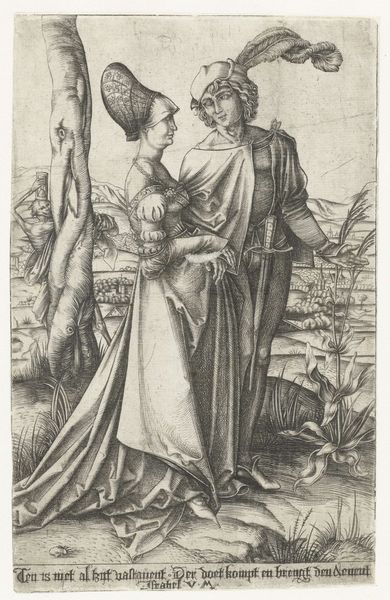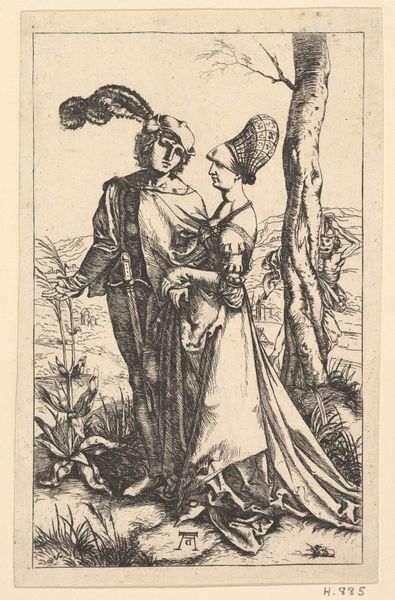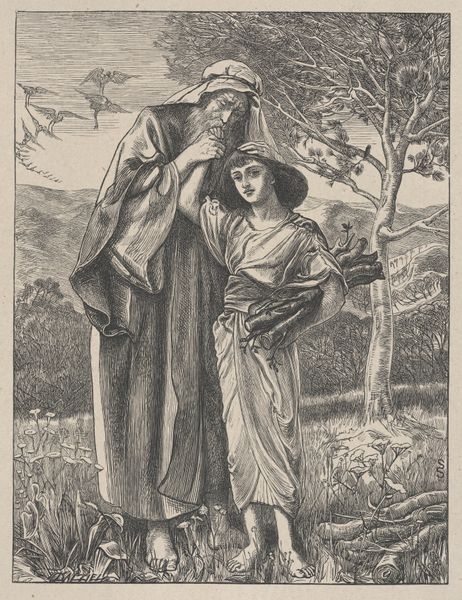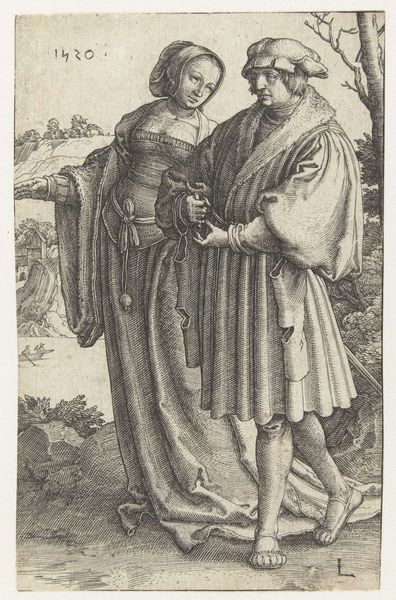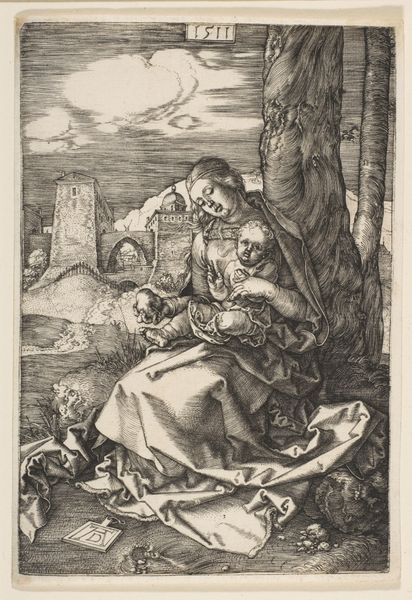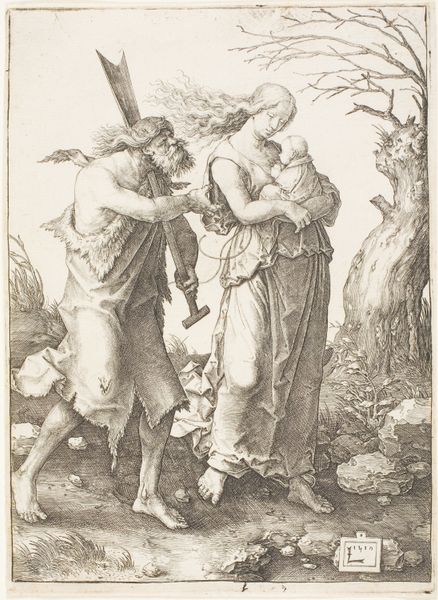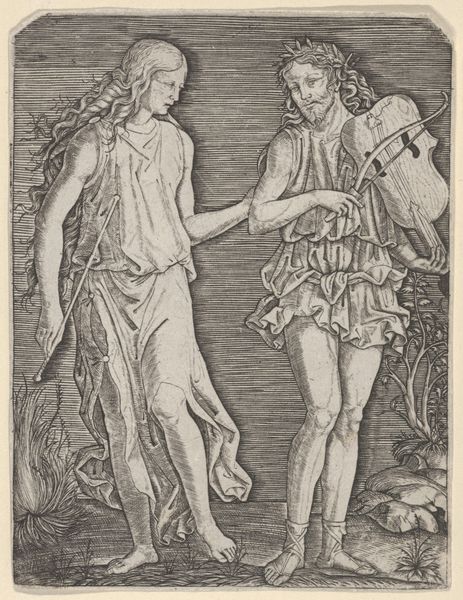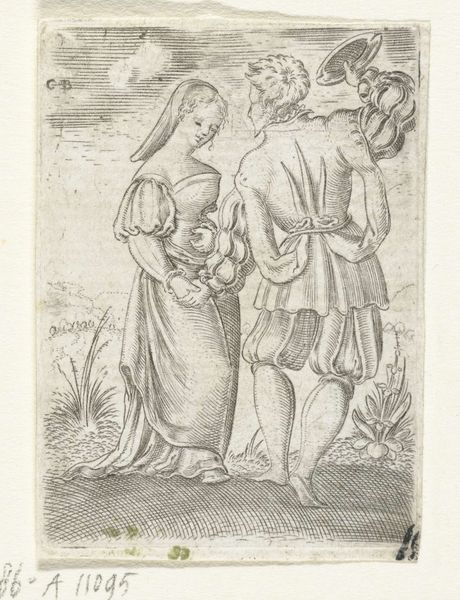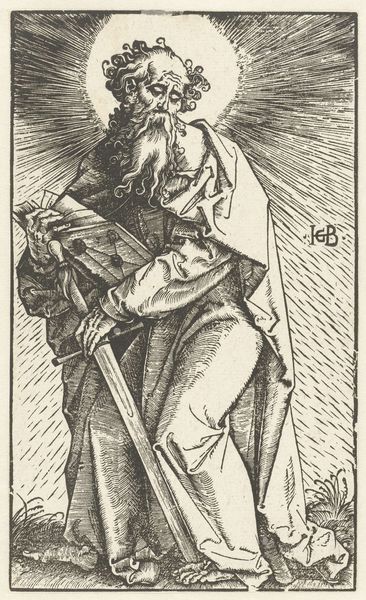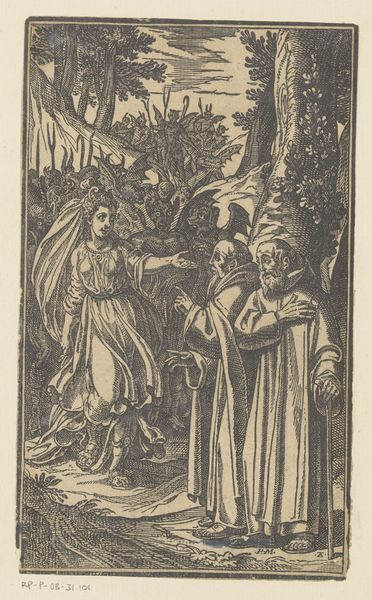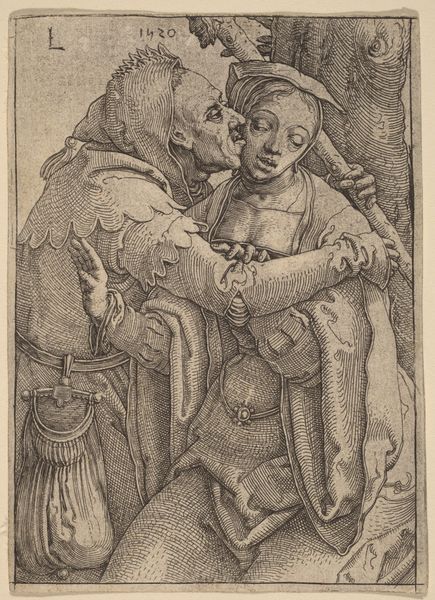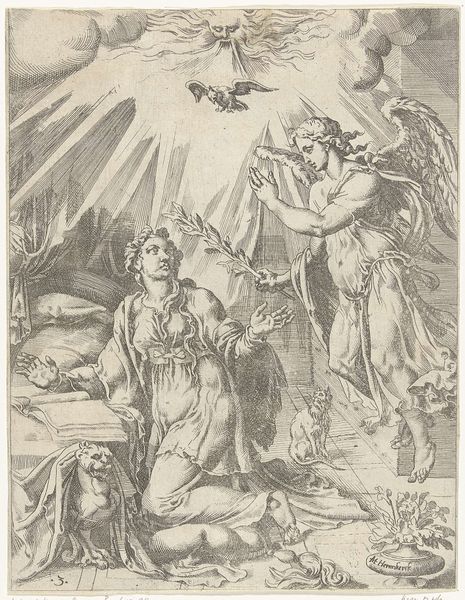
Lord and lady walking with figure of death hiding behind a tree, holding an hourglass, The Promenade after Dürer 1495 - 1539
0:00
0:00
Dimensions: Sheet: 7 11/16 × 4 13/16 in. (19.5 × 12.2 cm)
Copyright: Public Domain
Curator: This is "Lord and Lady Walking with Figure of Death Hiding Behind a Tree, Holding an Hourglass, The Promenade after Dürer," an engraving by Marcantonio Raimondi dating from sometime between 1495 and 1539. Editor: My immediate sense is one of subtle dread, masked by elegance. The crisp lines lend a formality that is almost unsettling, given the subject matter implied in the title. Curator: Indeed, the linear quality reinforces the era's preoccupation with morality and mortality. Though presented as a fashionable couple, the symbolism offers a deeper reading. What do you make of the figure lurking behind the tree? Editor: That skeletal figure disrupts the supposed serenity. The hourglass, of course, is a classic memento mori symbol, reminding us of time’s relentless march and the inevitability of death. It creates a tension between the beauty of the couple and the lurking decay. Curator: Precisely. Death as an uninvited guest to pleasure. The couple’s attire speaks to worldly vanity and perhaps spiritual blindness. Raimondi echoes the earlier Northern Renaissance anxieties about earthly life and salvation. Editor: I'm particularly drawn to the texture created by the engraving technique. The cross-hatching defines form, but also casts everything in a certain somber light, which affects how the figures are received, no? The intricate patterns almost feel like a veil over the scene. Curator: Consider how prevalent the theme of Death was within the Italian Renaissance. With plagues rampant and war always a menace, this visual allegory spoke directly to society’s collective consciousness, offering both a warning and a chance to consider what truly matters in the fleeting moments of life. It’s like a secular sermon visualized. Editor: In a sense, yes. By rendering it so sharply and meticulously, Raimondi gives the allegory a chilling power. The underlying philosophy here is not just to accept fate but examine it, to contend with the very elements and aesthetic values represented by a figure with such gravitas. Curator: Understanding Raimondi's placement of Dürer within the piece is vital as well. There's commentary on what occurs in life beyond our initial perspective of its nature, its material value, or lack thereof. The Promenade is not only representative of mortality but that beyond what initially meets the eye, that time reveals all truths, all natures of life in equal measure. Editor: Agreed. Ultimately, this is a brilliant construction on the ephemeral. Thank you for illuminating the symbolism that underscores this artwork so vividly. Curator: It’s been a fascinating discussion. The interplay between formal beauty and deeper allegorical meaning always rewards a closer look.
Comments
No comments
Be the first to comment and join the conversation on the ultimate creative platform.
